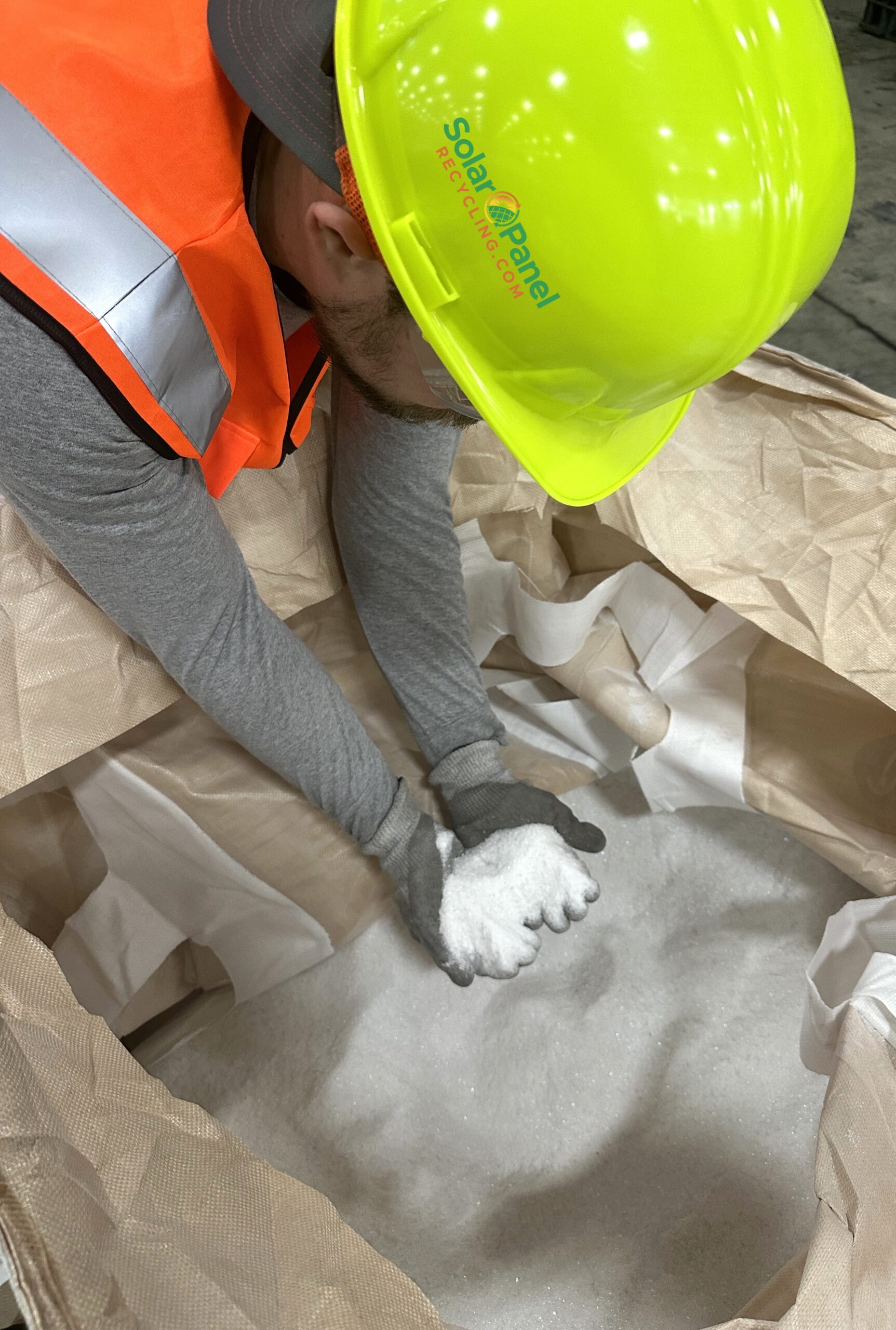With many PV systems now starting to reach their end of life, there is growing concern about what happens to solar panels when they are no longer useful. Without an increase in solar recycling, the U.S. will contribute 10 million metric tons of trash in landfills and other waste facilities by 2050, according to the International Renewable Energy Agency (IRENA). To put this into context, the U.S. dumps almost 140 million tons of waste each year, according to the Environmental Protection Agency.
The National PV Recycling Program, founded in 2016, is a network of recycling and refurbishment providers approved by the Solar Energy Industries Association (SEIA) after undergoing an audit process that assesses procedures and technologies.
pv magazine USA toured a facility in North Carolina, owned by one of the approved recycling vendors, SolarPanelRecycling.com, where we observed highly automated techniques used to separate high-purity and high-value materials from solar panels.
Prior to recycling solar panels, the company focused on electronics recycling and data destruction. Brett Henderson, Solarpanelrecycling.com chief executive officer explained that the company began its foray into solar recycling when a long-time utility client of a decade and a half was taking a small solar field of 10,000 panels offline. At the time, there were few opportunities for recycling, so Brett’s firm spent five years doing research that included trips to Europe and Asia where they observed specialized processes. “They’re more advanced as far as dealing with waste streams,” Henderson said.
The company was launched in 2023 and now has four locations: Two in North Carolina, and one in Georgia and Texas. The North Carolina center, is considered its hub, and the Texas campus is where the company performs R&D to further advance the recycling processes and sustainability standards.
The recycling expert uses proprietary technology to extract nearly 100% of the value from recycled solar equipment, including silver, silicon, copper, aluminum, and glass. But Henderson pointed out that what he believes they’re taking the lead on in the U.S. is achieving true and clean commodity separation. “We take the panels in, take them apart, and make sure none of the components are contaminated with silicon.”
The company said it intends to continue to open facilities that it both owns and operates, locating them where the need is greatest. The flagship location is in North Carolina, which Henderson said is fourth in the nation for solar installations. A Breckinridge, Texas location serves growing western Texas sector. In the Atlanta, Georgia area, SolarPanelRecycling.com opened a line within the facility of one of its largest glass consumers.

In the North Carolina facility, the company observed solar panels entering the recycling process by first being read by artificial intelligence (AI) for depth and width, and it then it locates the junction box. That information is used throughout the process to make sure they achieve the highest level commodity recycling, Henderson said.
A robot removes the junction box, and it goes into an electronics recycling machine that recycles nickel, copper and aluminum. Then the aluminum frame is removed using a process implemented in most European and Asian recycling markets. Henderson said that, unlike some recycling processes that still send panels to landfills, his company removes all of the aluminum.
Next comes glass removal, with AI playing an important role in determining exactly how close the robot can get to the silicon without any danger of contamination. Subsequent steps separate silicon, copper, silver, and encapsulants.
Henderson emphasized the importance of R&D in recycling in part to keep up with advances in solar technologies. Take bifacial solar panels, for example. When they first came on the market, the company had people manually turning them to remove the glass from both sides, but the company is now implementing a new automated bifacial solution that Henderson said they think is the most advanced in the market.
“The U.S. PV recycling market stands at a pivotal moment. Asset owners must consciously choose to embrace true PV recycling rather than defaulting to landfills or partial recyclers who primarily recover aluminum while leaving behind critical materials—resulting in a recycling rate of less than 8%,” said Henderson. “By committing to genuine recycling practices, the solar industry can not only counter the claims of clean energy opponents, who argue that modules are mostly landfilled at end-of-life, but also begin reintegrating these critical materials back into the U.S. supply chain.”
A few factors ensure a steady waste stream for the recycling industry including the burgeoning U.S. solar industry, coupled with new state legislation that mandates recycling. Solar recycling will further accelerate the growth of U.S. solar installations, Henderson said, “by reducing dependence on offshore manufacturing and fostering greater community support by ensuring modules are not simply buried in the ground.”
This content is protected by copyright and may not be reused. If you want to cooperate with us and would like to reuse some of our content, please contact: editors@pv-magazine.com.









By submitting this form you agree to pv magazine using your data for the purposes of publishing your comment.
Your personal data will only be disclosed or otherwise transmitted to third parties for the purposes of spam filtering or if this is necessary for technical maintenance of the website. Any other transfer to third parties will not take place unless this is justified on the basis of applicable data protection regulations or if pv magazine is legally obliged to do so.
You may revoke this consent at any time with effect for the future, in which case your personal data will be deleted immediately. Otherwise, your data will be deleted if pv magazine has processed your request or the purpose of data storage is fulfilled.
Further information on data privacy can be found in our Data Protection Policy.